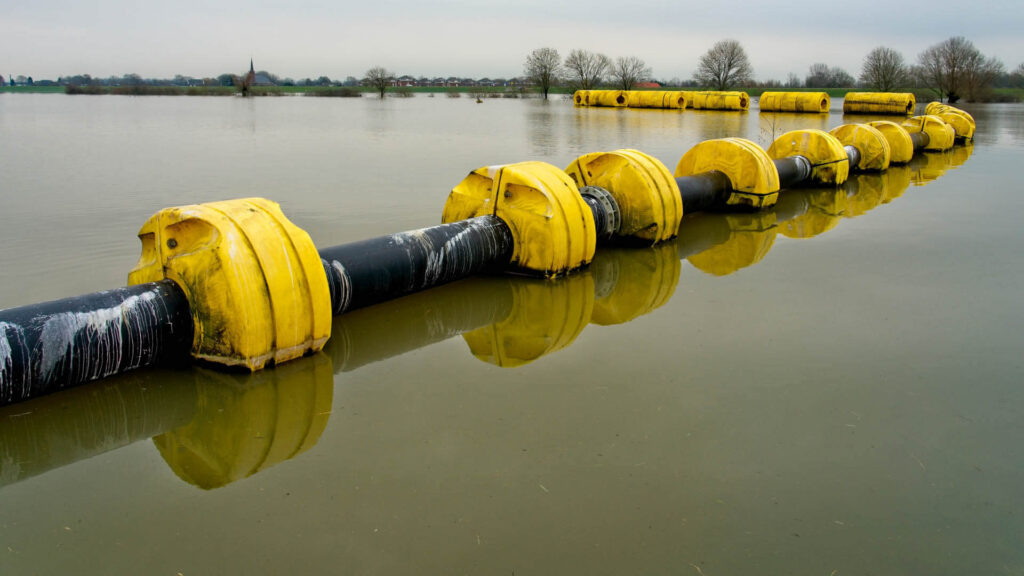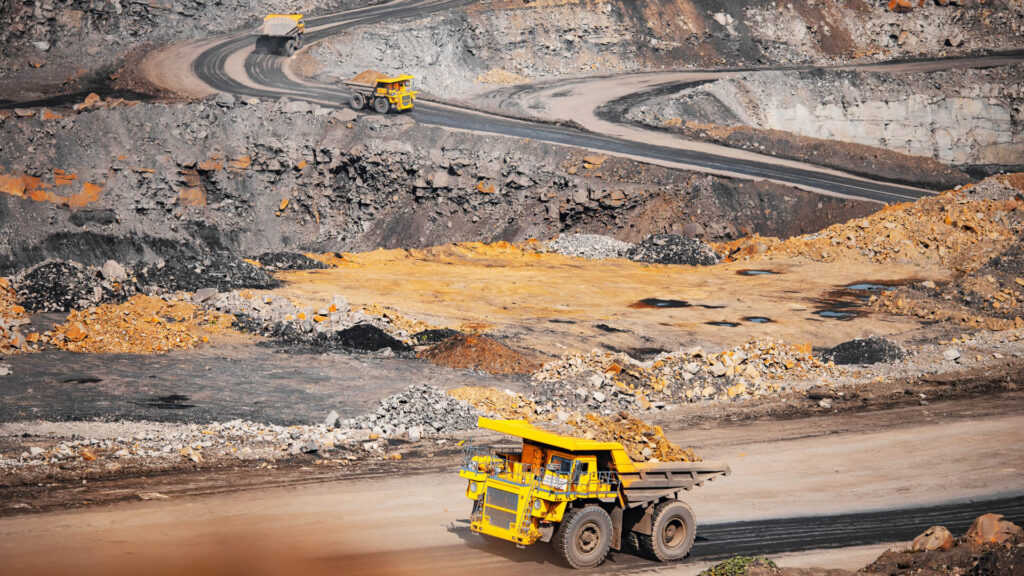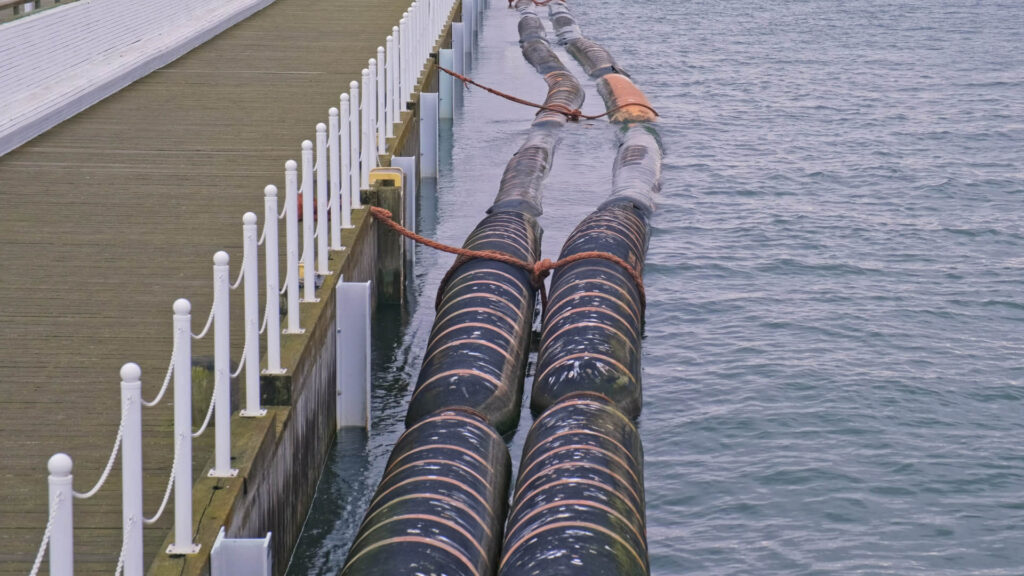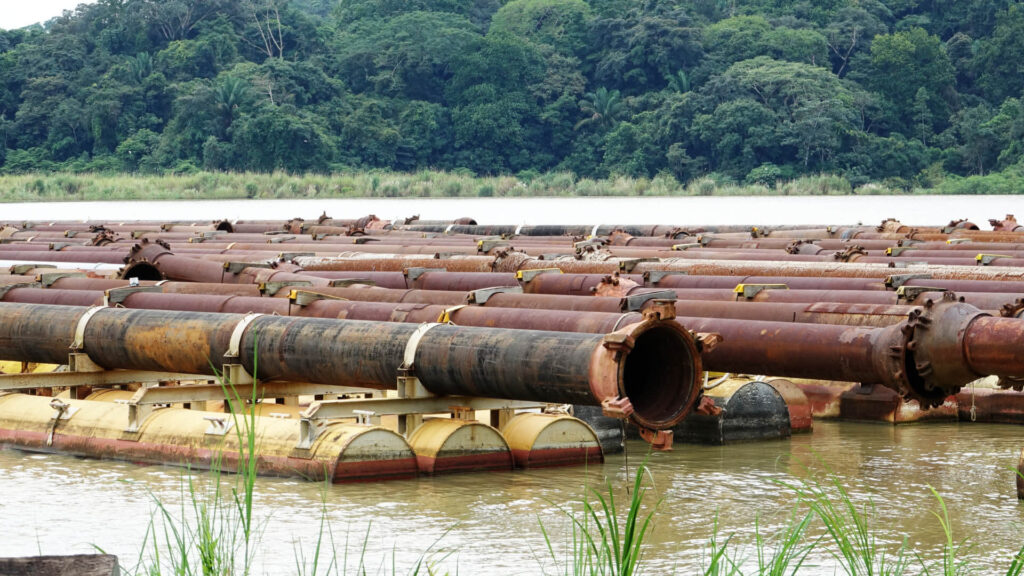Floating dredge technology has revolutionized dredging operations, offering an efficient and adaptable solution for mining, construction, and environmental projects. Unlike traditional land-based systems, a floating dredge operates on water, allowing for seamless excavation of sediments, minerals, and debris from lakes, rivers, and coastal areas. These dredges are crucial for deepening waterways, extracting valuable materials, and restoring ecosystems affected by sediment buildup.
In particular, the demand for floating gold dredge systems has surged in the mining industry, where operators seek high-efficiency equipment to recover gold from riverbeds and underwater deposits. These dredges enhance gold recovery rates by utilizing advanced sluicing and separation techniques, reducing operational costs while maximizing yield. Meanwhile, dredge pipe floats have become an essential component in modern dredging systems, ensuring pipelines remain stable and efficient during sediment transport.
The growing need for sustainable dredging solutions has driven innovation in floating dredge design, leading to improvements in automation, energy efficiency, and durability. This article explores the latest advancements shaping the industry, from enhanced pumping systems to environmentally friendly dredging practices. As technology continues to evolve, floating gold dredge equipment and dredge pipe floats will play a pivotal role in improving operational efficiency and sustainability in dredging projects.
Evolution of Floating Dredges
The floating dredge concept dates back centuries, with early versions used for clearing waterways and harvesting minerals. Early dredging methods relied on manual labor, simple bucket systems, and steam-powered equipment, making them inefficient and labor-intensive. Over time, technological advancements led to the development of more powerful and automated dredging systems, enabling larger-scale projects in mining, construction, and environmental restoration.
One key industry that benefited from these advancements was gold mining. The introduction of the floating gold dredge transformed underwater gold extraction by allowing miners to recover gold from riverbeds and submerged deposits efficiently. Early models used basic suction systems and rudimentary sluicing mechanisms. Still, modern floating gold dredge equipment now features high-capacity pumps, advanced recovery systems, and eco-friendly designs that minimize environmental disruption.
The evolution of the floating dredge has been instrumental in expanding dredging operations to shallow water and remote locations. Unlike traditional excavators or fixed dredging systems, floating dredges provide greater mobility, making them ideal for projects in lakes, rivers, and coastal areas. This adaptability is particularly valuable in regions where land-based equipment cannot operate effectively. Additionally, the use of dredge pipe floats has improved dredging efficiency by keeping pipelines afloat, reducing friction, and ensuring smooth sediment transport over long distances.
Modern innovations continue to refine dredge technology, incorporating automation, GPS-guided navigation, and energy-efficient components. As industries seek more sustainable and cost-effective solutions, floating dredges remain at the forefront of dredging advancements. They play a crucial role in waterway maintenance, resource extraction, and environmental conservation. Whether used for gold mining, land reclamation, or sediment removal, the evolution of floating dredges has significantly improved the efficiency and effectiveness of dredging operations worldwide.
Cutting-Edge Advancements in Floating Dredge Technology

As dredging operations evolve, new technologies are reshaping dredge efficiency, sustainability, and precision. Advancements in automation, pumping systems, and eco-friendly designs are transforming dredging in the mining, construction, and environmental restoration industries.
Automation & Remote Operation
Modern floating dredge systems are increasingly incorporating automation and remote operation features, improving efficiency and safety. AI-driven controls enable operators to monitor and adjust dredging activities in real time, reducing the need for on-site manpower and minimizing human error. Additionally, GPS-guided dredging enhances precision, ensuring accurate excavation of sediments while avoiding unnecessary disturbance to surrounding environments. These advancements are particularly beneficial for floating gold dredge operations, where precise extraction is essential for maximizing gold recovery.
Improved Pumping Systems
High-performance slurry pumps are a game-changer in dredging, enhancing the capability of a floating dredge to handle various sediment types more efficiently. These pumps are designed with increased durability, wear-resistant materials, and anti-clogging mechanisms to reduce downtime and maintenance costs. In gold mining applications, floating gold dredge units now feature advanced pump systems that optimize suction power, improving material extraction while reducing energy consumption.
Eco-Friendly Dredging Solutions
Sustainability is a growing focus in dredging, with new technologies aimed at reducing environmental impact. Low-emission and energy-efficient dredging equipment help minimize fuel consumption and lower operational costs. Additionally, sustainable sediment management practices, such as eco-friendly disposal and waterway restoration techniques, are becoming industry standards. The integration of dredge pipe floats plays a crucial role in these efforts by improving pipeline buoyancy and reducing resistance, leading to smoother and more energy-efficient sediment transport.
With continuous innovation, the floating dredge industry is advancing toward greater efficiency, precision, and sustainability. As mining, construction, and environmental projects demand more refined solutions, these cutting-edge technologies will define the future of dredging operations.
Floating Gold Dredge Innovations

The development of modern floating dredge technology has significantly advanced gold mining operations, making extraction more efficient and environmentally friendly. A floating dredge allows miners to access submerged gold deposits in rivers, lakes, and other bodies of water, maximizing recovery while minimizing disruption to surrounding ecosystems. Recent innovations in floating dredge systems have improved both small-scale and large-scale mining operations by increasing recovery rates, reducing energy consumption, and enhancing overall efficiency.
One key advancement in gold mining is the refinement of high-recovery dredging systems. Modern floating gold dredge units now feature enhanced sluicing technology, which allows for more effective separation of gold from sediments. These systems use precision-engineered riffles, expanded capture areas, and advanced water flow control to ensure that fine gold particles are retained rather than lost in the process. Additionally, improved pump designs in floating dredge units contribute to better suction power, reducing operational downtime and increasing productivity.
Dredge pipe floats also play a crucial role in optimizing dredging efficiency. By keeping pipelines buoyant and reducing drag, these floats enhance the stability of sediment transport systems, allowing for smoother material movement from the dredging site to processing areas. The integration of high-durability materials in dredge pipe floats has also led to longer-lasting components that require less maintenance, reducing costs for gold mining operations.
With these ongoing innovations, the floating dredge continues to be an essential tool in gold mining, improving recovery rates while reducing environmental impact. As technology advances, floating gold dredge systems will further refine their efficiency, offering a sustainable and cost-effective solution for extracting valuable resources from underwater deposits.
Enhancements in Dredge Pipe Floats & Buoyancy Systems
Dredge pipe floats play a critical role in modern dredging operations by improving the stability and efficiency of sediment transport. These floats ensure that discharge and suction pipelines remain buoyant, preventing excessive strain on dredging equipment and allowing for smoother material movement. Whether used in large-scale mining operations or environmental restoration projects, dredge pipe floats contribute to better operational control, reducing the risks associated with submerged or sagging pipelines. As floating dredge technology advances, so too does the innovation behind these essential buoyancy components.

New Materials and Designs for Enhanced Durability
Traditional dredge pipe floats were often made from metal or lower-grade plastics that degraded quickly due to harsh marine environments. However, recent advancements have led to the development of high-density polyethylene (HDPE) and composite materials that offer superior durability, resistance to UV damage, and impact protection. These modern designs ensure that floating dredge operations can run efficiently without frequent maintenance or replacements. Additionally, modular float systems have been introduced, allowing operators to adjust buoyancy levels based on project requirements.
Reducing Drag and Improving Fuel Efficiency
One of the most significant improvements in dredging efficiency comes from optimizing buoyancy systems to reduce drag. When dredge pipe floats are strategically placed, they help minimize resistance against water currents, allowing pipelines to maintain a steady position without excessive movement. This leads to improved fuel efficiency in floating dredge operations, as dredging equipment requires less power to transport materials over long distances. In gold mining, a floating gold dredge benefits from enhanced buoyancy systems by ensuring consistent sediment flow, which improves recovery rates and reduces downtime caused by blockages or unstable pipelines.
With the increasing demand for sustainable and cost-effective dredging solutions, innovations in dredge pipe floats continue to push the industry forward. Floating dredge operations, particularly in gold mining, rely on these buoyancy systems to maintain productivity and efficiency. Whether improving fuel consumption, stabilizing pipelines, or enhancing material durability, the latest developments in dredge pipe float technology contribute to the ongoing evolution of floating dredge systems. As dredging projects become more complex, investing in advanced buoyancy solutions will be essential for achieving long-term success in floating gold dredge operations and other dredging applications.
Challenges & Future Trends in Floating Dredge Technology

As dredging operations expand to meet the increasing demand for resource extraction and waterway maintenance, the industry faces several challenges that must be addressed through innovation and research. Floating dredge technology has significantly evolved over the years, but operational efficiency, environmental concerns, and cost management remain critical areas of focus. With ongoing research and development efforts, advancements in automation, materials, and eco-friendly solutions will shape the future of floating dredge systems.
Common Industry Challenges
One of the biggest challenges in floating dredge operations is maintaining efficiency while minimizing operational costs. Fuel consumption, equipment wear, and pipeline maintenance all contribute to high expenses. Proper placement and use of dredge pipe floats are essential for reducing drag and stabilizing pipelines. However, many dredging operations still rely on outdated or inefficient float systems that use excessive energy. Upgrading to modern, lightweight dredge pipe floats can improve fuel efficiency and extend pipeline lifespan, but adoption has been slow due to cost concerns.
Environmental impact is another major challenge, especially in mining operations where floating gold dredge systems are used to extract precious metals from riverbeds and underwater deposits. Traditional dredging methods can disrupt ecosystems, cause sediment displacement, and lead to water pollution. Stricter regulations are pushing the industry toward eco-friendly dredging techniques, requiring innovations in sediment management and low-emission dredging equipment.
Future Advancements in Floating Dredge Technology
Automation and AI-powered dredging solutions will drive the future of floating dredge systems. GPS-guided automation is already improving excavation precision, and further advancements will allow for fully autonomous dredging operations. In floating gold dredge mining, automated sluicing and sorting mechanisms will enhance gold recovery rates while reducing labor costs and human error.
Material innovation will also play a key role in the next generation of floating dredge equipment. For example, the development of corrosion-resistant, lightweight materials for dredge pipe floats will improve durability and performance in harsh environments. Additionally, the integration of smart sensors into floating dredge systems will allow operators to monitor real-time performance data, optimizing efficiency and reducing maintenance downtime.
Looking ahead, sustainability will be at the forefront of dredging advancements. More energy-efficient dredging pumps, biodegradable hydraulic fluids, and improved waste management techniques will help reduce the environmental impact of floating dredge operations. With continued research and innovation, floating gold dredge systems and dredge pipe floats will become more efficient, cost-effective, and environmentally responsible, ensuring the long-term success of dredging projects worldwide.
Conclusion
Floating dredge technology has undergone significant advancements, improving efficiency, sustainability, and cost-effectiveness in dredging operations. From automation and AI-driven controls to high-performance pumping systems and eco-friendly solutions, modern dredging equipment is more precise and reliable than ever. Innovations in floating gold dredge technology have enhanced gold recovery rates, while improved dredge pipe floats have optimized sediment transport and fuel efficiency. These developments are helping industries such as mining, construction, and environmental restoration achieve better outcomes with reduced environmental impact.
Adopting modern dredge solutions is essential for companies looking to improve productivity and sustainability. Upgrading to advanced automation, durable materials, and energy-efficient systems can significantly reduce operational costs while ensuring long-term efficiency. Investing in optimized dredge pipe floats and high-performance dredge units allows businesses to stay ahead in an increasingly competitive industry.
Now is the time to explore cutting-edge dredging technology. Companies that embrace innovation will gain a competitive edge, enhancing their ability to tackle complex projects with greater precision and environmental responsibility.


